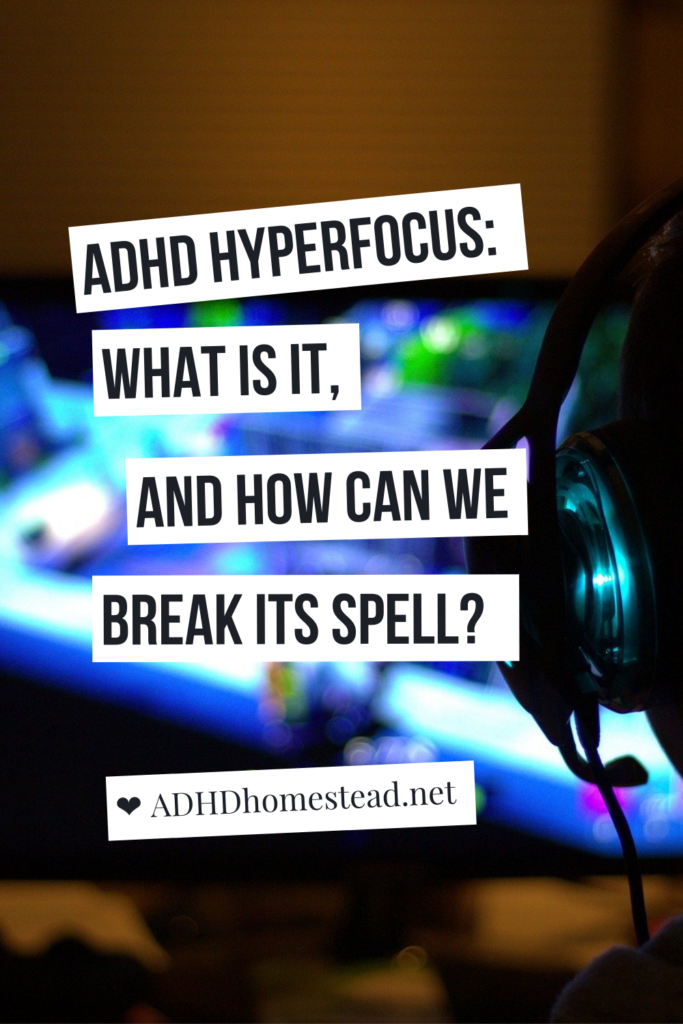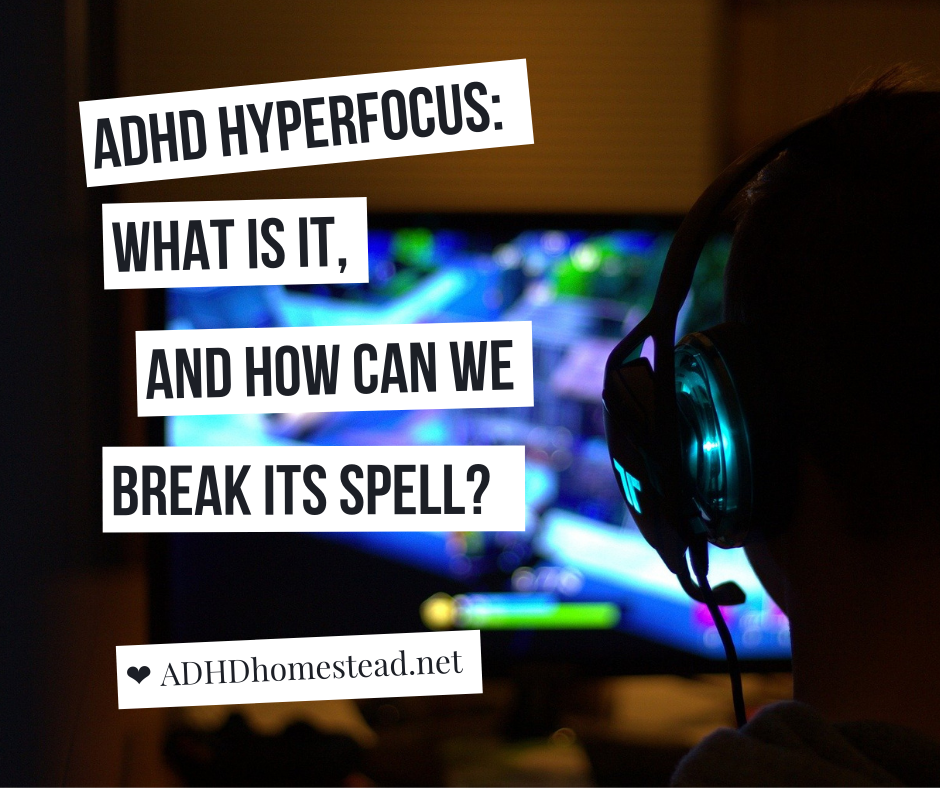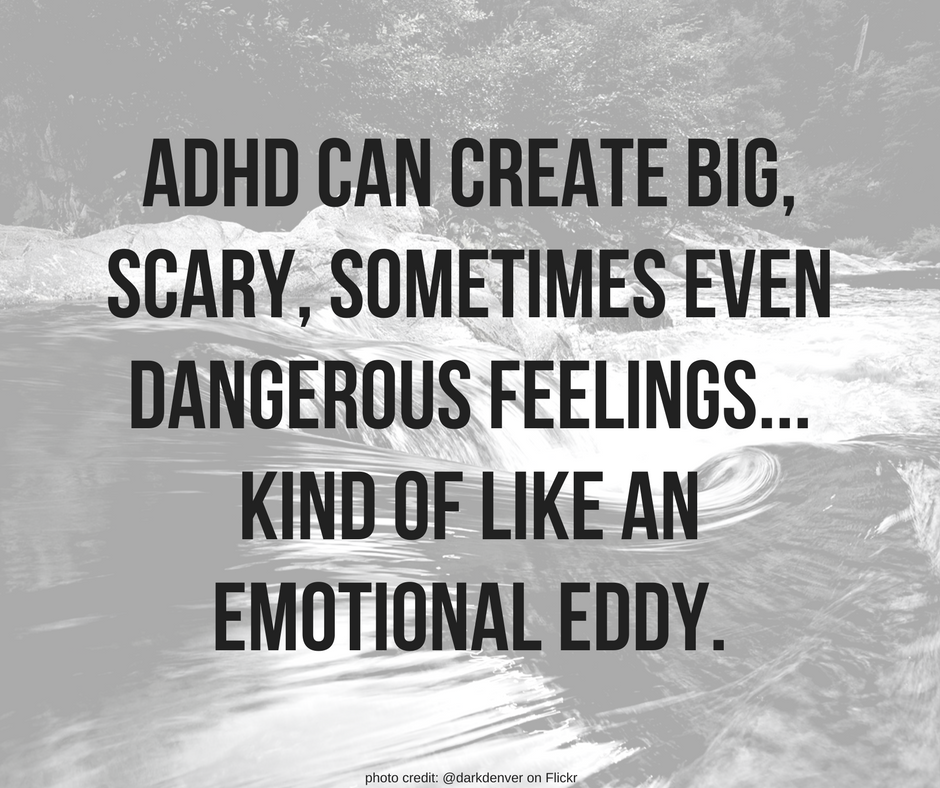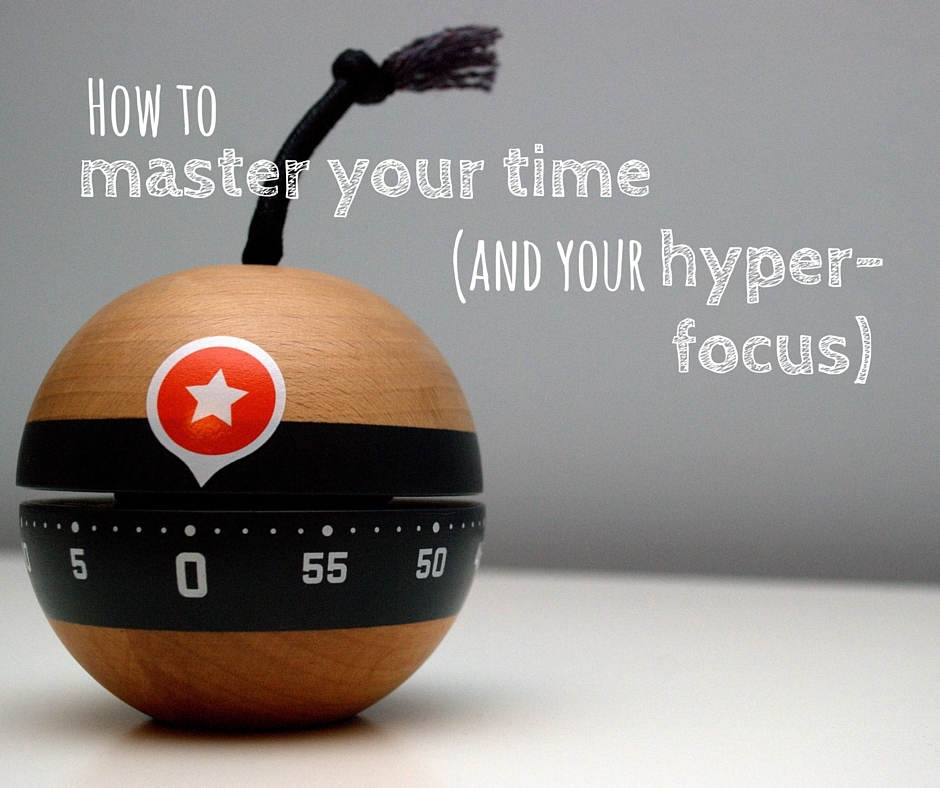This post was adapted from my book Order from Chaos. More info here.
Here’s a familiar story: person with ADHD promises to complete a household chore (e.g. mow the lawn). Person with ADHD sits down in front of a video game to play for 10 minutes. Lawn remains unmowed. Darkness falls. Lawn is still unmowed. An entire day has passed. Person with ADHD is now in trouble.
I could write infinite variations on this theme.
While the first D in ADHD stands for deficit, ADHDers don’t start out with less attention than everybody else. ADHD cripples our attention regulation. It strips us of the choice as to where our attention focuses. Judging from the ubiquity of the “look! a squirrel!” cliché, most people know all about ADHD and distraction. You may not know about its counterpart, hyperfocus.
Hyperfocus is a powerful state. Some people even call it a superpower. If you do that, don’t forget the most important thing about superpowers: you need to learn to control them.
In this post, I’ll to talk straight to people helping someone with ADHD. More often than not, an ADHDer stuck under the hyperfocus spell doesn’t have the self-awareness or willpower to break it.
Fortunately, you can try a relatively easy trick to bring a hyperfocuser back to reality.

But what is hyperfocus?
They may forget to pay bills or start the dishwasher, but many people with ADHD can turn on laser focus and spend hours on a single task — as long as it’s something that engages their interest. This is hyperfocus.
I’ve heard several people with ADHD describe hyperfocus as a state where time actually ceases to exist. This is why you can’t just tell us to look at a clock more often, wear a watch, or set a timer. The hyperfocus state means more than simply losing track of time. Its victim forgets time exists at all, until it’s too late.
Breaking the hyperfocus flow feels bad. If you’ve ever tried to disengage a person with ADHD from something they really wanted to keep doing, and you’ve been met with hostility or downright childishness, you’ve seen what I’m talking about.
As troublesome as it can be, hyperfocus isn’t all bad. It shares many characteristics with a state described as flow: we find ourselves absorbed in the moment, unaware of the passage of time, focused solely on the task in front of us. Hyperfocus only becomes harmful when we lose control of it — which can be often.
Hyperfocus isn’t a choice
Before you can help someone break the hyperfocus spell, you need to know it’s not a conscious choice. I get distracted more often than I hyperfocus, so I’ve had to work to build empathy with my husband, who’s a champion hyperfocuser. When I took up sewing, I had a huge breakthrough and finally understood the sensation of knowing I should stop, yet being unable to.
People without ADHD, especially those with naturally excellent self-control, may lack any concept of how this could not be a choice. Either I’m choosing to be responsible, or I’m choosing to be irresponsible. End of story.
It’s not that simple. As frustrating as hyperfocus can be when your spouse gets wrapped up in something and neglects food, sleep, and family, it helps to remind yourself they aren’t doing it on purpose. She hasn’t said to herself, “Continuing this activity is more important than my family.” He doesn’t decide at 9:00 p.m., “I think I’ll stay up until 4:00 a.m. playing World of Warcraft.”
In fact, before you even say a word to us, we’ve usually beat ourselves up internally. We know we did you wrong, and we wanted to do better, we just…didn’t. And we’re as frustrated about that as you are.
To break hyperfocus, reconnect the fabric of time
My husband has spent many hours brushing off suggestions that he move on from a hyperfocus activity and eat, sleep, or help me around the house instead. After the spell has broken, he’ll readily admit he shouldn’t have spent an entire day on whatever captured his attention. By then it’s too late.
To help an ADHDer break their hyperfocus, try this simple trick: ask the person to close their eyes and imagine themselves at some point in the future. Make it mundane. I’ve imagined myself standing in the kitchen preparing dinner. I’ve asked my son to visualize himself walking from the house to the car on his way to school in the morning. The moment can be ordinary, and it should be unrelated to the current hyperfocus state.
I know it sounds strange, but it works. I discovered this strategy, which I later found articulated in Kelly McGonigal’s The Willpower Instinct, while deep in the depths of a negative emotional hyperfocus. (Side note: Yes, hyperfocus can affect emotions, too, leaving you with no grasp on anything outside what you’re currently feeling. And yes, this can be dangerous. People with ADHD are at a nearly fivefold risk for self-harm.)
The effect of this visualization exercise can feel like a fog clearing from your brain.
Why visualizing our future self helps
Our brains have different regions for thinking about ourselves and about other people. When you stay up too late or order that one last drink and think, “I’m going to regret this tomorrow,” your brain uses the regions dedicated to thinking about someone else.
We don’t connect to our future self as deeply as our present self. That’s why your hyperfocusing ADHDer won’t pull themselves away from the video game to mow the lawn. Their future self — the person who will be in trouble for not mowing the lawn — feels like another person.
Imagining a moment in the future, even if it’s something as simple as a trip to the grocery store, helps us connect to ourselves outside the moment. For an ADHDer, that doesn’t come naturally.
Make sure your help is welcome
You may be tempted to use this little bit of knowledge every time you catch your ADHDer doing something you don’t like. Be careful. This is brain science, not sorcery.
Make sure you’re coming from a genuinely helpful place and not offering a scolding, “I want you to think about how tired you’re going to be tomorrow if you don’t get to bed.” Discuss the future-self visualization strategy beforehand and allow your loved one to accept your assistance.
After all, someone who views you — and not the hyperfocus state — as the primary problem is unlikely to cooperate no matter how many brain science tricks you throw at them.
What are your tricks for redirecting hyperfocus?
This post was updated with audio narration and new graphics on September 8, 2020.
Hey there! Are you enjoying The ADHD Homestead?
Here's the thing: I don't like ads. I don't want to sell your attention to an advertising service run by the world's biggest data mining company. I also value my integrity and my readers' trust above all, which means I accept very few sponsorships/partnerships.
So I'm asking for your support directly. For the cost of one cup of coffee, you can help keep this site unbiased and ad-free.
Below you will find two buttons. The first lets you join our crew of Patreon pals and pledge monthly support for my work. Patrons also have access to my Audioblogs podcast. The second takes you to a simple donation page to pledge one-time or recurring support for The ADHD Homestead, no frills, no strings. Do whichever feels best for you!





